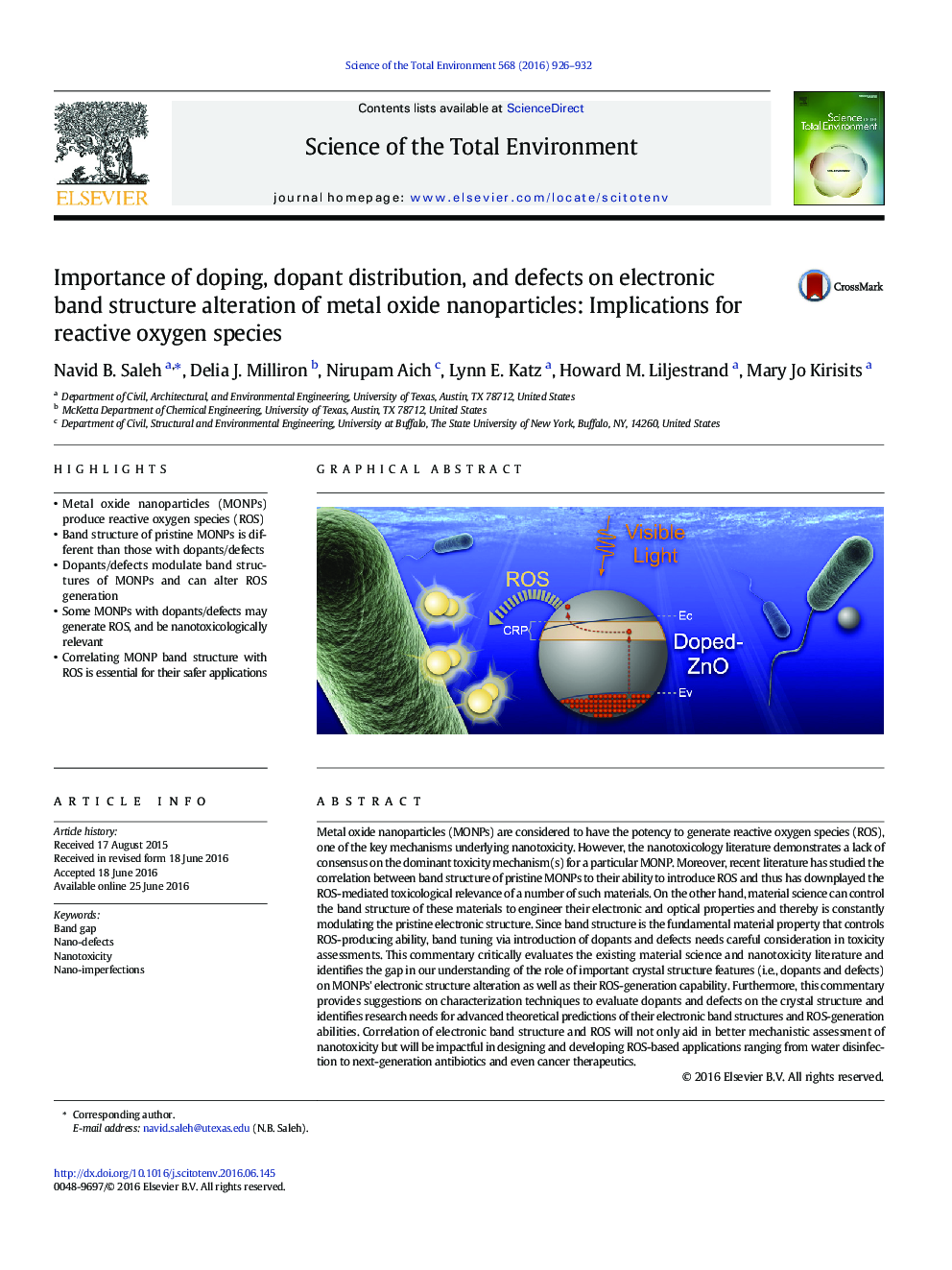| کد مقاله | کد نشریه | سال انتشار | مقاله انگلیسی | نسخه تمام متن |
|---|---|---|---|---|
| 6321249 | 1619722 | 2016 | 7 صفحه PDF | دانلود رایگان |
- Metal oxide nanoparticles (MONPs) produce reactive oxygen species (ROS)
- Band structure of pristine MONPs is different than those with dopants/defects
- Dopants/defects modulate band structures of MONPs and can alter ROS generation
- Some MONPs with dopants/defects may generate ROS, and be nanotoxicologically relevant
- Correlating MONP band structure with ROS is essential for their safer applications
Metal oxide nanoparticles (MONPs) are considered to have the potency to generate reactive oxygen species (ROS), one of the key mechanisms underlying nanotoxicity. However, the nanotoxicology literature demonstrates a lack of consensus on the dominant toxicity mechanism(s) for a particular MONP. Moreover, recent literature has studied the correlation between band structure of pristine MONPs to their ability to introduce ROS and thus has downplayed the ROS-mediated toxicological relevance of a number of such materials. On the other hand, material science can control the band structure of these materials to engineer their electronic and optical properties and thereby is constantly modulating the pristine electronic structure. Since band structure is the fundamental material property that controls ROS-producing ability, band tuning via introduction of dopants and defects needs careful consideration in toxicity assessments. This commentary critically evaluates the existing material science and nanotoxicity literature and identifies the gap in our understanding of the role of important crystal structure features (i.e., dopants and defects) on MONPs' electronic structure alteration as well as their ROS-generation capability. Furthermore, this commentary provides suggestions on characterization techniques to evaluate dopants and defects on the crystal structure and identifies research needs for advanced theoretical predictions of their electronic band structures and ROS-generation abilities. Correlation of electronic band structure and ROS will not only aid in better mechanistic assessment of nanotoxicity but will be impactful in designing and developing ROS-based applications ranging from water disinfection to next-generation antibiotics and even cancer therapeutics.
423
Journal: Science of The Total Environment - Volume 568, 15 October 2016, Pages 926-932
